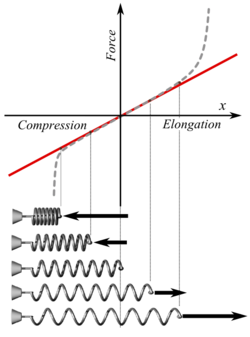So you keep "harping" on about this. Let's see if we can agree on this.......
It's necessary mathematical precision. If you tell me two things are isomorphic, I need to know what type of isomorphism. This entire thread is about the distinction between a real and a complex vector space, or between a vector space and an algebra. Precision is critical here. Not a point I can back down on, unfortunately; so if you still think I'm harping or being overly pedantic, perhaps we can drill down. Because I see this as the essence of the question.
$$\mathbb{R} \times \mathbb{R} \equiv \mathbb{R}^2$$ is not a field - there does not exist a multiplicative inverse for each element. However it is ring - there exists both additive and multiplicative identities and an inverse for addition.
Likewise, the field $$\mathbb{C}$$ is a ring, like any other field.
Both $$\mathbb{C}$$ and $$\mathbb{R}^2$$ can be viewed as Real modules (by virtue of the above). But, equally, both can be regarded as Real vector spaces (since $$\mathbb{R}$$ is a field).
So the isomorphism I claimed is a bijective ring homomorphism, a bijective R-module homomorphism, and also a bijective vector space homomorphism. But not a field homomorphism.
Yes we are in total agreement on everything you wrote.
However, there's one more structure to consider. $$\mathbb{C}$$ is an $$\mathbb{R}$$-algebra and $$\mathbb{R}^2$$ is not.
An
$$\mathbb{R}$$-algebra is a vector space over $$\mathbb{R}$$ that is also a ring, endowed with a multiplication that is compatible with scalar multiplication by reals. The complex numbers are an algebra over the reals. That's what makes them different than $$\mathbb{R}^2$$.
https://en.wikipedia.org/wiki/Algebra_over_a_field
To put this in perspective, the quaternions and octonions are also algebras over the reals. They're vector spaces plus a multiplication on the vectors that's compatible with multiplication by scalars.
It might look strange, but what I'm hoping is that some understanding of the differences between real and complex vector (and tensor) spaces will emerge.
Your earlier remark about springs sounded interesting. Can you explain this in simple terms? You said a stationary spring was like $$\mathbb{R}^2$$ and an oscillating spring is like $$\mathbb{C}$$? Is it possible to put that in very simple terms? I looked up springs and evidently the force is kx where k is a constant. I can see how that's linear. That's literally everything I know about springs.
Or perhaps I'll only manage to underline that physics is strictly an abuse of mathematics . . .
Even if it is, physical insight seems to have a lot to do with math. A lot of great mathematicians were physicists too.
p.s. isn't it the case that a ring is, or has, an algebra defined on it?
A given ring could have a lot of algebras defined on it. A ring is an algebra over itself, after all.
You can think of an algebra as just one ring inside another. The reals inside the complex numbers for example. Any tme you have one ring inside another, the outer ring is a module over the inner one. (You need some regularity conditions such as that the rings both have 1 and that it's the same 1).
I thought that for instance, the real line with addition and multiplication is algebraic, or I thought that's what I was told. Should I think again?
I think there's some confusion about the word algebraic versus "an" algebra. If you have a field inside another field (like the reals inside the complex numbers for example) a real number is algebraic over the rationals if it's the root of some polynomial having rational coefficients. So $$\sqrt{2}$$ is algebraic (being a root of the polynomial $$x^2 - 2)$$ and $$\pi$$ isn't (this requires proof, of course). That's a totally different meaning, in the context of determining whether polynomials have solutions that can be obtained via algebraic operations.
The complex numbers are "an algebra" over the reals because they're a vector space over the reals along with a multiplication that's compatible with scalar multiplication by reals. In that respect, the reals are trivially an algebra over themselves.
What springs "have to do with" the different (isomorphic?) spaces is obvious: springs are extended linearly under equilibrium and you can map this to $$ \mathbb R^2$$. But an oscillating spring maps to $$ \mathbb C $$.
Can you explain that in simple terms?








